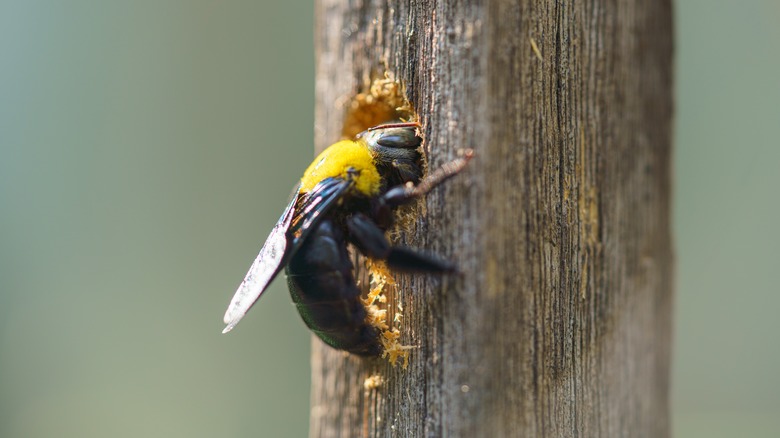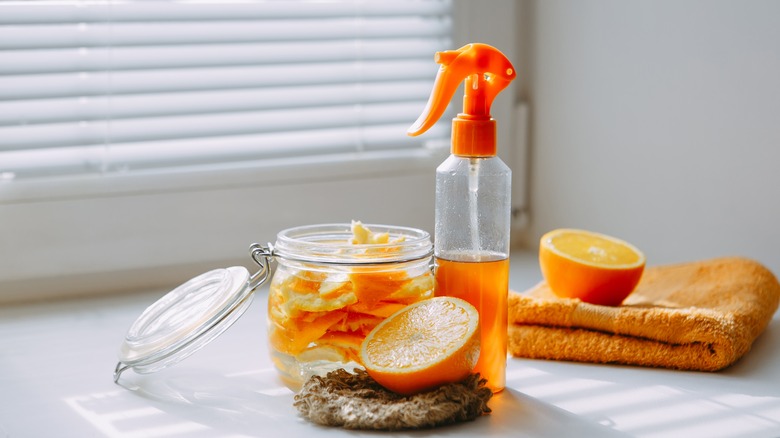Can You Safely Prevent Carpenter Bees From Nesting In Your Yard Using Aluminum Foil?
Shiny and black with a fuzzy midsection, carpenter bees are useful for pollinating vegetables such as eggplants. As a homeowner, you probably don't like the holes they may leave behind in wood for their nests, hence the name "carpenter bee." There are multiple hacks on how to stop them from boring holes, but can you safely prevent carpenter bees from nesting in your yard using aluminum foil? No. You can plug the nesting holes with foil, but you may trap and kill a bee in the process — and you also risk the chance they chew another hole.
Bees are some of the world's most vital insects as pollinators, and among the global bee population are carpenter bees. Unlike bumble bees or honeybees, however, the females of the species nest in tunnels, or holes in wood, particularly unpainted wood, per the University of Kentucky Department of Entomology. Common areas for carpenter bee nests include in-home siding, furniture, and decks. While it's unlikely that carpenter bees can severely damage your wood unless in great numbers over a long period, the holes can cause pooling water, attract insects, and also contain bees' fecal matter. While aluminum foil isn't a good deterrent, there are other all-natural ways to keep carpenter bees away.
Safely keeping carpenter bees from nesting
Late summer into early fall before the bees nest, offers a good time for prevention. Use an all-natural bee deterrent such as citrus oil or bitter almond oil in existing holes or areas with any carpenter bees. You can purchase bitter almond oil, and it's easy to make citrus oil: boil a pot of water and a slice of your favorite citrus fruit for 10 to 15 minutes. After the liquid cools, place in a spray bottle. The powerful scents will repel bees, just like citrus oils can keep fire ants out of your home. Spray frequently and treat the holes directly to repel the bees without killing them. Some experts are divided on whether you should treat or paint your unpainted wood, so that decision is up to you. If you do decide to treat the wood with paint, do focus on filling the cracks with caulk, after the bee tenants vacate, of course.
Another way to prevent carpenter bee nests is to remove their nesting sources, i.e, replace wood with vinyl or aluminum. While costly, this move could be a way to increase your home's curb appeal as well as make the home less attractive to carpenter bees. A more cost-effective solution can be to hang wind chimes near your home to deter the carpenter bees, as bees don't like the noise or vibrations. Remember that carpenter bees, while annoying, are still a vital part of our ecosystem as a crop pollinator. Focusing on gentle, non-lethal prevention is a good route to preserve their population.

